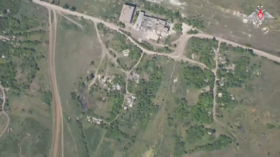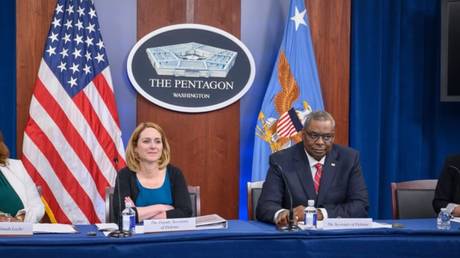In Surprise Move, Pentagon Deploys 3 Types Of Strategic Bombers To Guam
Amid soaring tensions between Washington and Pyongyang, the Pentagon has deployed nearly every type of strategic and nuclear-capable bomber to the island of Guam, an American territory in Micronesia, in the Western Pacific.
In a show of force, the B-1B Lancer bombers, the B-2 Spirit stealth bombers, and the B-52H Stratofortress bombers are now ‘temporarily’ stationed at Andersen Air Force Base on the tiny U.S. territory.
According to the Pacific Air Forces Public Affairs, six B-52H Stratofortress bombers and 300 Airmen from Barksdale Air Force Base, Louisiana, are deploying to Andersen Air Force Base in support of the U.S. Pacific Command’s Continuous Bomber Presence mission. The B-52Hs will relieve a unit of B1-B Lancer bombers by the end of the month. The mission, which started in 2004, is intended to keep the pressure on China, North Korea, and other potential opponents in the East.
The B-52Hs and B-1Bs will be accompanied by three B-2 Spirit stealth bombers, which deployed last week from Whiteman Air Force Base in Missouri, said The Washington Times. Given the Pentagon’s unusual show of force this month, with three kinds of strategic bombers parked on the tarmac at Andersen Air Force Base, the last time this occurred was in 2016.
However, the show of force will wind down at the end of the month, when the B-1Bs return to Ellsworth Air Force Base in South Dakota.
The Pentagon’s rotation of B-52Hs in exchange for B-1Bs could be a move worth paying attention too.
For instance, the B-2 Spirit stealth bomber is the only U.S. strategic bomber that can deliver a nuclear bomb. Meanwhile, the B-52H can launch small nuclear cruise missiles.
Military strategists are now pointing to the 2010 New START Treaty between the United States and Russia, which limits the B-1B Lancer bomber from carrying a nuclear payload. This analysis could signal the Pentagon’s future intentions for a pre-emptive nuclear attack on North Korea with the need for more nuclear-capable bombers.
After all, it does not make sense for the Pentagon, who has a knack for nation-building, to start the reshaping of the Korean Peninsula with all the wrong tools. Does it?... Perhaps, the rotation of strategic bombers at Guam is the Pentagon form of sharpening its tools before a significant move.
The Washington Post explains how the Pentagon has occasionally used the B-1Bs to show force against the North Koreans. In response, North Korea’s foreign minister, Ri Yong Ho, threatened to shoot down the strategic bombers late last year.
The B-1s have been involved in numerous shows of force against North Korea in the past few months, sometimes flying in formation with other aircraft from the United States, South Korea and Japan before dropping bombs on training ranges in South Korea. North Korea’s foreign minister, Ri Yong Ho, threatened in September to shoot down U.S. warplanes, even if they are not in North Korean airspace. He argued that President Trump’s tweets about the standoff between the two nations was tantamount to a declaration of war. U.S. officials said afterward that they would continue to use international airspace for missions.
Earlier this month, President Trump’s suggestion to the North Korean Leader Kim Jong Un about “nuclear button” size caused much concern about the deteriorating relations between both two countries. On Tuesday, North Korea’s official press called President Trump a “spasm of a lunatic.”
North Korean Leader Kim Jong Un just stated that the “Nuclear Button is on his desk at all times.” Will someone from his depleted and food starved regime please inform him that I too have a Nuclear Button, but it is a much bigger & more powerful one than his, and my Button works!
— Donald J. Trump (@realDonaldTrump) January 3, 2018
President Trump’s tweet was triggered after the North Korean Leader delivered his annual televised speech to the nation:
“The United States can never fight a war against me and our state. It should properly know that the whole territory of the U.S. is within the range of our nuclear strike and a nuclear button is always on the desk of my office, and this is just a reality, not a threat.”
As the Pentagon preps for its next chapter in nation-building on the Korean Peninsula, the Air Force is getting for that fateful day when a nuclear war breaks out with the need for more nuclear-capable bombers. The war drums beat, can you hear them?




